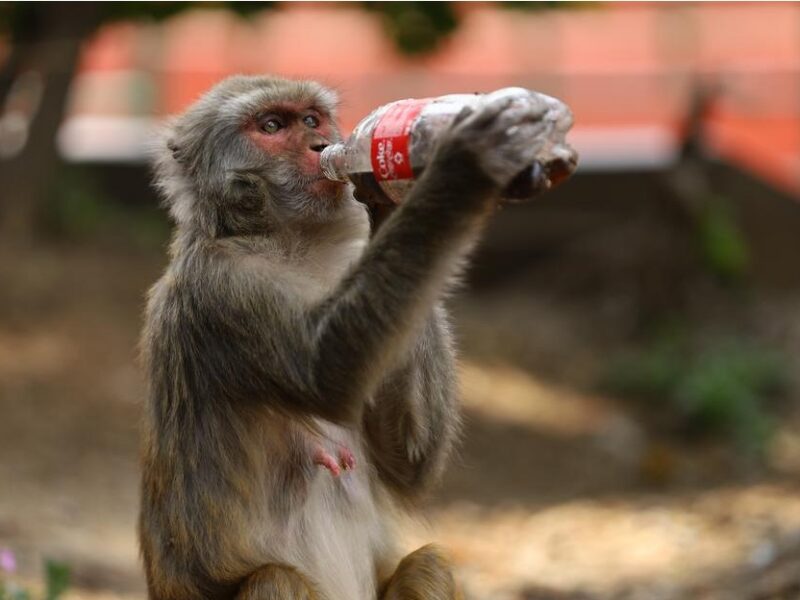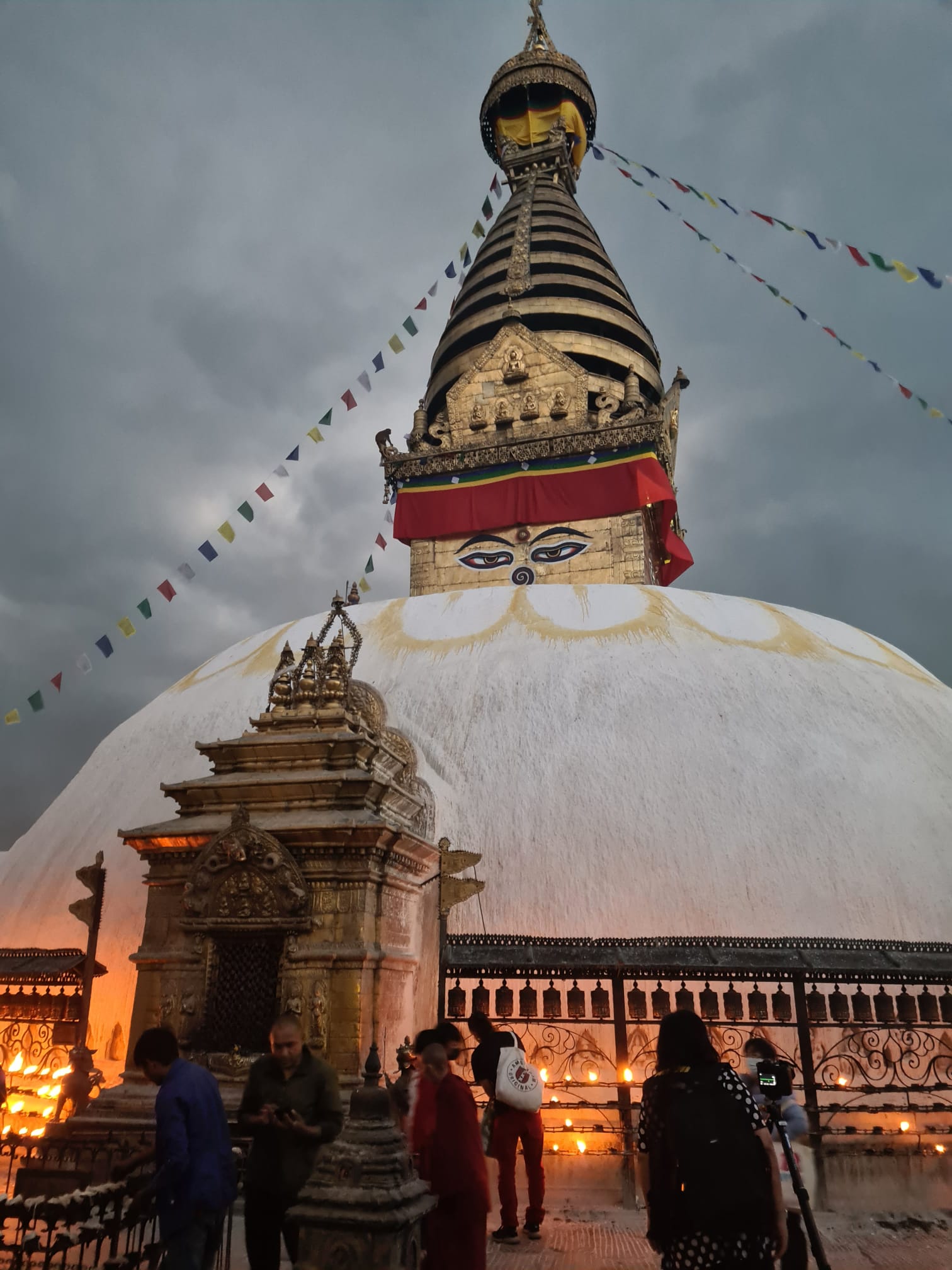
25 Jul RIVERS behind the scenes. RIVERS fieldwork in Nepal: In Katmandu, even the monkeys are thirsty
In Kathmandu, even the monkeys are thirsty.
Kathmandu, the capital of Nepal, a city that welcomes you with a landscape full of colorful low buildings, the promise of an incredible eight thousand people hidden behind an atmosphere of pollution, streets without sidewalks, and a kind of consensual street order in a reign of street chaos understandable only to Nepalese.
During the days of fieldwork in this indescribable city, interviewing various indigenous lawyers and conducting workshops with documentary filmmakers, we had the opportunity to visit the Swayambhu Stupa. Located on a hill west of the city of Kathmandu, it is considered one of the most important Buddhist shrines, although it is also revered by Hindus. This stupa was built by King Manadeva in 640 AD and is surrounded by a complex of monasteries and temples, which was declared a World Heritage Site by UNESCO in 1979.
The impressive complex is almost entirely surrounded by prayer wheels. This place is known as the Temple of the Monkeys, and it didn’t take long to find out why.
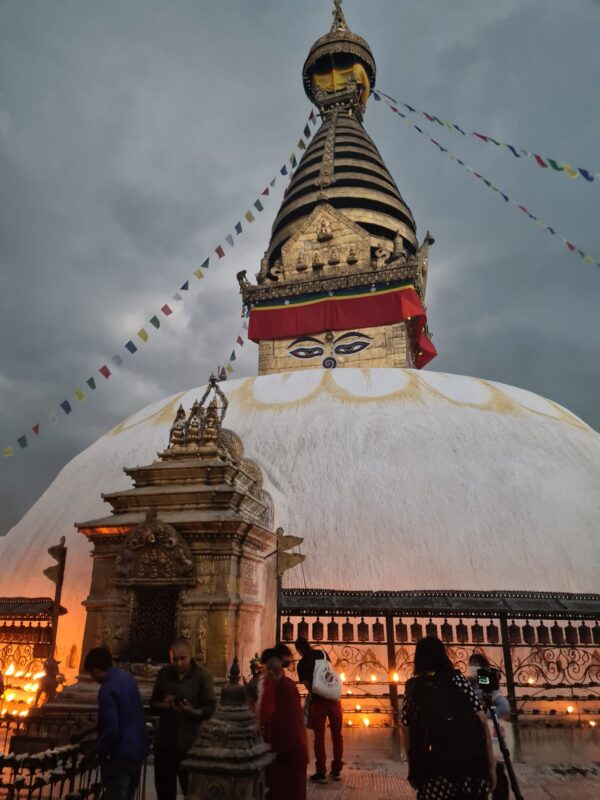
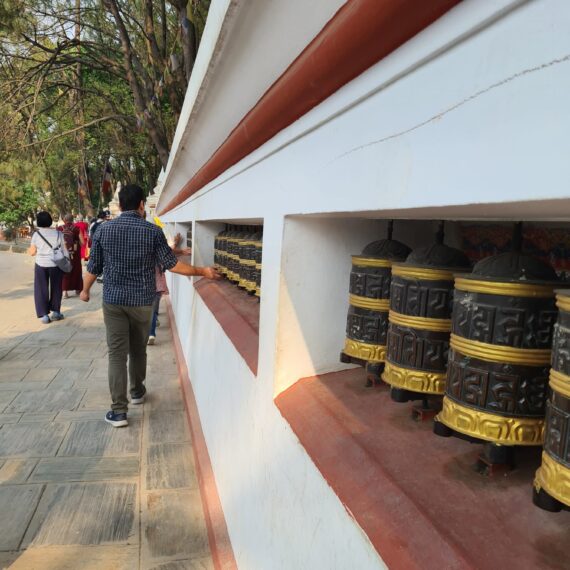
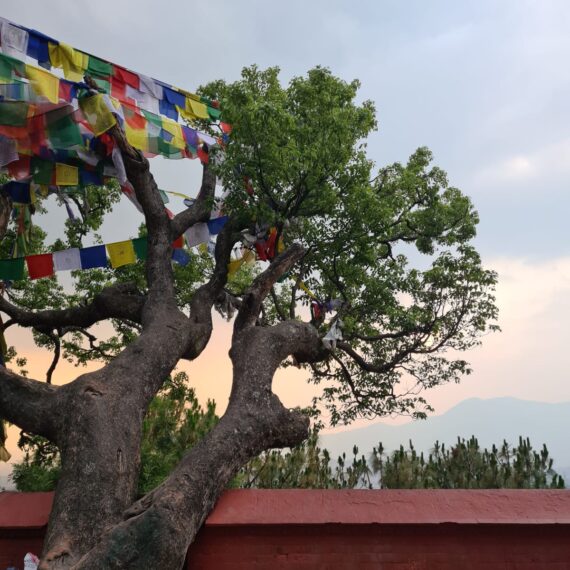
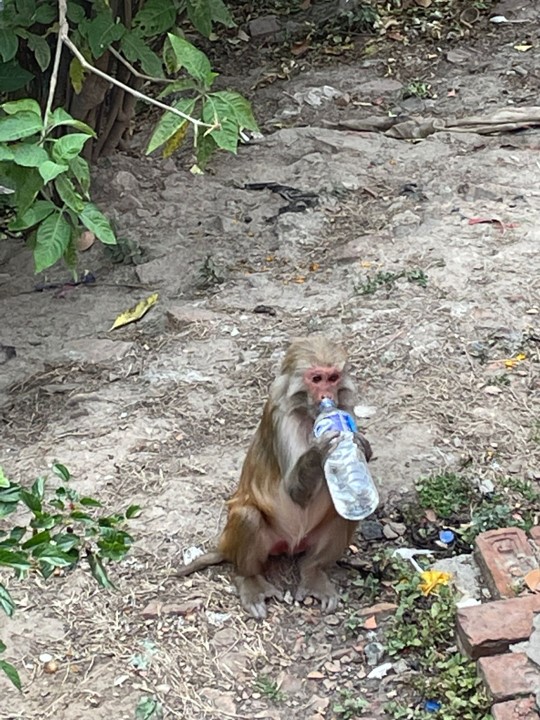
Hundreds of steps lead up to the stupa at the top of the hill. It seems to be the reign of monkeys, considered sacred creatures. These macaques (Macaca mulatta) are known for their ability to steal food from unsuspecting tourists. So we decided to visit the temple without any food.
After 2 hours of visiting the temple and attending some Buddhist ceremonies, we got thirsty and we bought some bottles of water. In a quiet moment we took out our bottles to drink. Seconds later, we were taking some snapshots trying to capture the magnificence of the place (image “visiting the Stupa surroundings”), when suddenly a monkey approached us screaming, trying to engage us with certain aggressivity. We did not understand what was happening, perhaps we were occupying part of its territory. We looked at each other and realized that the monkey wanted to drink water. Out of instinct and to avoid the attack, we quickly put the bottles down.
The monkey quickly approached to another woman who had a small glass of tea. The woman offered it to him, but the monkey, considering the high temperature of the tea it was drinking, threw the glass away and ran away.
We were shcoked by the spectacle. The monkeys are no longer just trying to get food from the tourists, the monkeys are thirsty.
Surfing the web, it is not difficult to find information with similar examples to the mishap we experienced and snapshots of monkeys drinking not only from water bottles, but also from bottles of sweet and carbonated drinks (1).
In fact, some information that I found in Kathmandu magazines, such as The Himalayan Times (2), refers to issues with monkeys in other temples in the city during 2014. The Pashupatinath temple, located in the eastern part of the capital, is estimated to have more than 600 monkeys.
In this article has being revealed that the Pashupatinath area was facing severe water shortage problems. As a solution, “We set up the water pots for the monkeys as a short-term solution”. Apparently, there have been cases of attacks on visitors in the area, so they planned to conduct a “behavioral study of monkeys in the Pashupati area to see if the animals cause any harm to pilgrims”.
The authorities already admitted that the real solution lies in removing the pollution of the Bagmati River and its main tributaries (2) (Bishnumati, Dhobi Khola, Manohara Khola, Hanumante Khola and Tukucha Khola). This famous river is revered by both Hindus and Buddhists, and there are Hindu temples on its banks where cremations are performed.
The main cause of pollution of the river is mainly due to industrial activities (concrete production, textile (carpets)) that discharge their waste into the river, as well as households (3), cremations… and discharges of pharmacological procedence (whose origin is unknown).
Moreover, the Kathmandu Valley has been undergoing one of the fastest rates of uncontrolled urbanization in Asia since 1990. Its population has grown from more than half a million in 1991 to more than two million in 2021. This is provoking the reduction of the river basin surface. Many of the wetlands and rice fields that absorbed monsoon rains and swelled the water table have also been paved over by (4,5).
In addition to all these processes, climate change is already causing changes in precipitation, leading to heavy rainfall events with severe consequences and heat waves.
Dozens of scientific studies and analyses such as the IPCC report have warned that Nepal is one of the most vulnerable countries to the climate crisis. Nepal is experiencing changes in temperature and precipitation faster than the global average (6,7).
It is not difficult to find information about the existing droughts in Nepal and how they affect the rural population and especially the capital Kathmandu, which is bathed by the polluted Bagmati River (article entitled Nepal struggles with blistering heat wave of this past June 16, 2023 (8)).
Day by day in Kathmandu, if you open your eyes, you will quickly discover that water bottles are not just for monkeys…
Throughout our stay in Kathmandu, we saw trucks distributing plastic water bottles of various capacities every day. At the hotel, we were provided with two 1.5 liter bottles of drinking water per day. Digging a little deeper, we discovered the problems of water management (or the lack of it) that lead to the private exploitation of water with the use of tanker trucks, and the consequent business behind it.
As indicated at The New York Times article from 2020 (9): “Tanker trucks often deliver poor-quality water that can make people sick. They usually charge much more than the state, which is devastating for the poor. Tanker water costs an average of 10 times more than government-supplied pipeline water…” These men and their tankers sometimes keep entire cities from running dry”.
Looking at the Great Himalayas, one of our common shared thoughts has been summed up by Peter Schwartzstein (9): “Perched at the foot of the water-rich Himalayas and blessed with a fierce monsoon, Kathmandu should never have become a poster child for the perils of tanker dependence”.
At Kathmandu, identifying thirsty monkeys was just the tip of the iceberg.
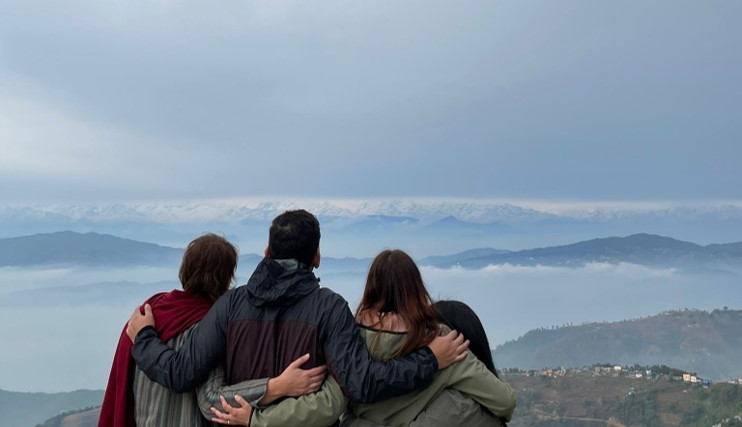
References:
(1) https://www.dw.com/en/nepal-struggles-with-blistering-heat-wave/a-65941491
(2) https://thehimalayantimes.com/kathmandu/padt-sets-six-water-pots-monkeys-pashupati-area
(4) https://www.nytimes.com/es/2022/10/11/espanol/katmandu-nepal-agua.html
(6) https://www.climatelinks.org/resources/climate-risk-profile-nepal
(8) https://www.dw.com/en/nepal-struggles-with-blistering-heat-wave/a-65941491
(9) https://www.nytimes.com/2020/01/11/business/drought-increasing-worldwide.html
ABOUT THE AUTHOR
Ana Paula García Nieto – RIVERS Project manager (Universidad Carlos III de Madrid)


